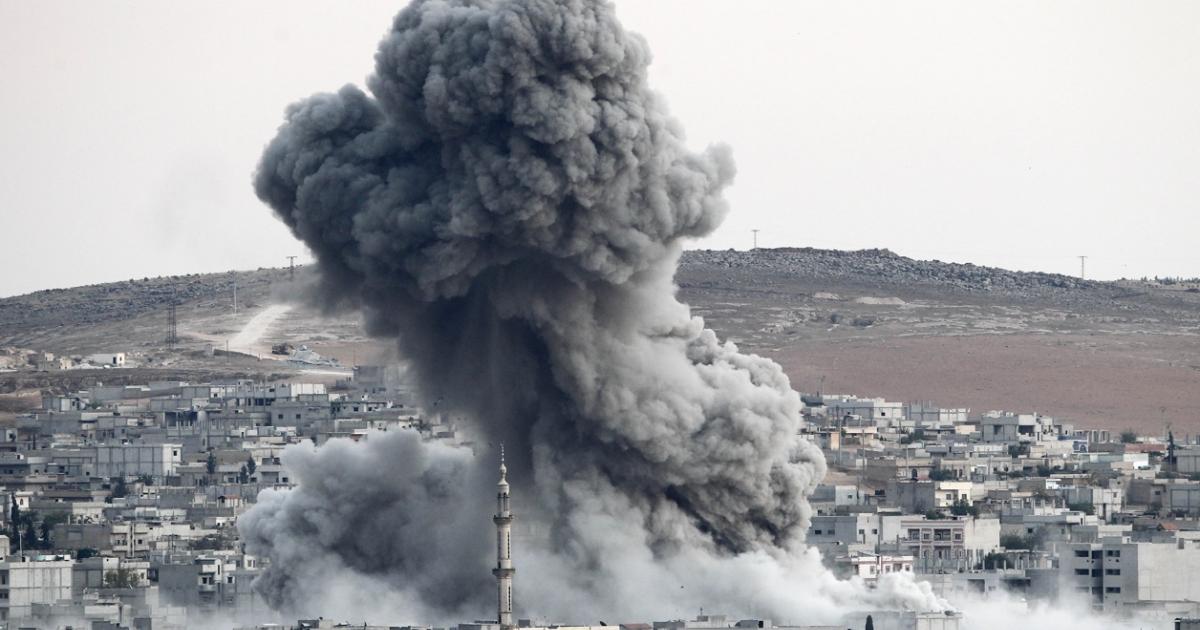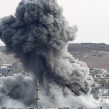
Russia Raises the Stakes in Aleppo
Publication: Eurasia Daily Monitor Volume: 13 Issue: 27
By:

Russia’s air campaign in Syria initially provoked critical remarks and skepticism from Western governments and commentators. However, the intervention, which involves targeted air strikes and close air support (CAS) for Syrian regime and allied forces, has made dramatic advances in recent days. The Russian defense ministry and the media reported on the successful regime-led advance on Aleppo, which allowed the Syrian Arab Army (SAA) and supporting militias operating under the cover of the Russian CAS to cut off rebel supply lines into Aleppo. Consequently, as the Aerospace Forces (Vozdushno Kosmicheskikh Sil—VKS) continue with the pursuit of their various objectives, it is worth examining how Russian specialists understand the level and limits of success in this operation (TASS, February 8).
Beyond the defense ministry’s official statements, most Russian military specialists recognize that the application of VKS air power cannot be compared with the capabilities of the United States Air Force. Generally, Russian defense experts also try to avoid too much comparison with Moscow’s use of air power in the Five Day War, in Georgia, in August 2008. Equally, there is recognition that the advances made by the SAA are not simply about Russian airpower, but relate to on-the-ground hardware supplies and training provided by Moscow. Mikhail Khodarenok, the editor of Voyenno Promyshlennyy Kuryer, assesses that the air grouping is capable of solving its assigned tasks. The Hmeymim airbase, which Russia is using in Syria, has around 4,000 personnel and more than 70 aircraft averaging 50–60 sorties daily. Predictably, the Su-24M is the real workhorse of the Russian air campaign, carrying up to 7.5 tons of various munitions and delivering these at ranges up to 560 kilometers. Khodarenok also highlights the importance of the Su-34, which can carry up to 8 tons of munitions and is capable of striking at distances of 1,100 km. As a result, the vast bulk of the sorties are conducted by these platforms (RBK, February 8).
Estimates in the Russian media put the costs of the VKS operations in Syria at around $2.5 million per day, or $230 million in its first three months. However, there is some discrepancy between media and official coverage in terms of how to define the “success” of the campaign. The trend is to emphasize territory gained, and downplay or ignore any setbacks. Yet, Khodarenok believes it is still too early to judge the overall impact of the VKS operation (RBK, February 8).
Colonel (retired) Viktor Murakhovsky, the editor of Arsenal Otechestva, has also offered insights as to the underlying reasons for the SAA’s recent on-the-ground successes. Murakhovsky believes that these battlefield accomplishments rely principally upon Russian military assistance: specifically its system of training and equipping the SAA. This involves not only the supply of new weapons and hardware to SAA battalion tactical groups but also the provision of combat training to boost the effectiveness of the overall train-and-equip program. For Murakhovsky, this train-and-equip drive is more important than the VKS air campaign. Linked to the train-and-equip program, Russia also provides for the recovery of the SAA’s maintenance-and-repair capabilities, ranging from aircraft to armored vehicles and other assets in the theater of operations. It is Russian assistance that facilitates the SAA’s logistics and supplies and helps conduct faster repairs (Lenta.ru, January 26).
Turning to the performance of the VKS in Syria, Murakhovsky interprets the operation on a gradual and cumulative basis. The impact of the VKS strikes gradually erodes enemy weapons, ammunition, fuel and supplies; it also reduces the maneuverability and firepower of enemy forces, as well as their ability to react quickly to attacks or to attempt to seize the initiative. Additionally, the cumulative effect of the VKS operations in Syria aggravates the financial capacity of enemy forces and their ability to recruit new members. This is also tied to economic factors such as falling oil prices, the reduction in income from the black market, as well as the loss of money laundering centers and transport assets due to air strikes (Lenta.ru, January 26).
Murakhovsky leaves no doubt that the VKS operations are important, including their CAS role, but stresses the Russian train-and-equip efforts to bolster the combat readiness of SAA units, which is likely to grow in the coming months. Russian military experts assess positively the early indications of successes on the battlefield in Syria resulting from VKS and supporting efforts. Army-General Valery Gerasimov, the chief of the General Staff, has said that the top brass is paying close attention to the results of the use of Russian weapons and hardware in Syria. He has also indicated that the General Staff wants to see more testing of advanced or experimental systems, including combat robots. It is likely, if the VKS continues its operations for a protracted period, that additional new systems will be tested in combat (RBK, RIA Novosti, February 8).
In an interview in Moskovskiy Komsomolets Nikolay Patrushev, the secretary of the Security Council and former director of the Federal Security Service (FSB), offered justification for Russian air strikes against international terrorists. The theme of Patrushev’s interview was anti-American and suggested Western governments should “thank” Russia for seizing Crimea. Patrushev asserted: “International terrorist organizations like ISIL [Islamic State of Iraq and the Levant—a former name for the Islamic State], al-Qaeda, and the al-Nusrah Front have recently become more active in the countries of North Africa and the Middle East. The expansion of the scales of their activity creates threats to the security of many states, including the Russian Federation. The military defeat of the Syrian Arab Republic and its possible disintegration would inevitably lead to the strengthening of these terrorist organizations and subsequently to the extremists retargeting toward Russian territory.” He added, “We have already encountered actions by international terrorists in Russia before. But we cannot allow that kind of thing any more. It is in this connection that we are fighting international terrorism outside our country. On Syrian territory we are primarily defending our own interests and also the security of other countries of the world against international terrorism.” For the Kremlin, it is equally important as to how the Russian involvement in Syria is publicly spun, rather than simply focusing on assessments of the VKS’s performance (Moskovskiy Komsomolets, January 27).
In terms of defining the effectiveness of the Russian intervention in Syria, given recent advances by the SAA, it seems that northern Syria will be a vital testing ground. In this context Moscow may not be ready for a full drive to find a diplomatic solution (Kommersant, February 7; Lenta.ru, January 26).




